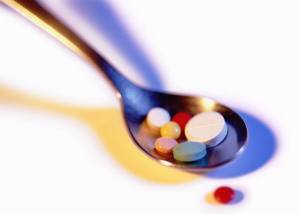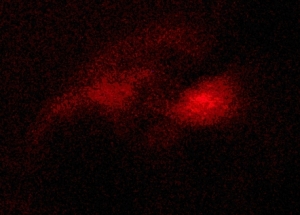Already my new resolution is bringing me answers… big ones, the kind of answers that you might ponder for lifetimes. As I lay in that half-dream state this morning, I thought about last night. I’d worked a 16 hour day which is crazy, mind-rigorous because being a pharmacist is first and foremost about being accurate and making sure that the patients you are attempting to help are also keep safe from harm. Secondly, it’s about creating good regimens that will maximize the effect of necessary medications such as scheduling the antibiotic at the correct times, dosing the medications to boost effect but within the limitations of the patient’s liver and kidney functions, ensuring that the concentration of the cardiac drip is appropriate, watching for all manner of issues or concerns (other meds, patient’s normal biochemical processes, how much the patient weighs, their age, their baseline health conditions) examining the parameters of narcotics or sedatives to keep the patient comfortable but also not exceed the abilities of their body to distribute and excrete the medication.
But I digress… this isn’t about what I do as a pharmacist. I was attempting to paint a picture of my state of mind last night. Bottom-line, I’d been focused and busy ALL DAY. Now, there have been many days that I’m similarly busy and I feel exhausted at the end of such a day. Last night, as I paid attention to how I was feeling, I realized that I felt more like a wanted a change, a shift, but it wasn’t due to true physical or mental exhaustion. This change, or shift, is what I’ve realized is the crucial point of understanding. In other words, what did I have all day and then didn’t have at the end of my shift? What I’d had all day was a sense of purpose, duty, a place or intention in the world. I woke up knowing what I had to do, that what I did really matters and felt fully competent in doing it. At the point of transition (end of my day of work), it was like a running a relay with the baton in my hand ready to hand-off, feeling great because I’d given my stretch of the track all I had but then someone had turned the lights off and closed the race down. There was no clear hand-off. The space of time in front of me at that moment was unknown, without purpose, detached.
It is this type of decision-point that I realized would usually cause me to experience a rush of pain, of deflation, of uncertainty that, in turn, would make me want to fill the void with something to alleviate the pain. All kinds of things will work… eating, having a glass (or more) of wine, interacting with another person, getting lost in a movie, going to sleep, exercising, working some more. The list is as limitless as any human being’s ability to come up with things to do. Where does the pain, the deflation, the let-down come from and why is it perceived as pain?
This is where it gets interesting. There is an exquisitely painful point within us, like a deep wound that holds our false sense of unworthiness. Within this cesspool of agony, we don’t believe we have what it takes to not be alone. It’s the part that is beyond the fear of separateness… it knows to the CORE that separateness is our only true reality and that there is absolutely something very wrong with us that makes this true. Now picture a magnet flipped over so instead of pulling another magnet closer, it twists, wiggles and maneuvers in an attempt to move away from the other magnet and the harder you try to push the two magnets together, the more violently they will repel. In the end, you can’t ever get the 2 magnets to connect. This is how our psyche relates to this core point of grief and ache within us. We will do ANYTHING to not get close to this so we either buffer or numb ourselves, distract or erect incredible fortresses in an attempt to create distance.
This explains our moods and our addictions or habits… when we are anxious, fearful, despairing; we are circling around the precipice of this wound. It’s almost like being in a room of glass shard walls that create a maze. Everywhere we attempt to move, we get cut on the glass, there is no moving into a soft corner, every decision or diversion brings a fresh cutting. When we feel accomplished, connected to other people, happy, free, we have only managed to move away from the wound by creating a world that makes us feel safe from the throb of our unworthiness. Highly intelligent people use their mind to create layers upon layers of reason and understanding, creative people spin themselves into an intricate world of beauty and inspiration, powerful people harden the space with walls of ingenious, control, manipulations, extroverted people bounce among and intertwine through their relations with others, introverted people withdraw and go inward into themselves, easily wearied from trying to find ways to “stay out there” in open territory. Every decision or movement of our life which gives us a perception of less lonely or self-importance gives us a sense of relief. Every decision or movement that takes us closer to feeling loss of purpose or separateness (being still, an unfilled space of time, feeling dejected, rejected, confused, fearful, lonely, bored, uncertainty) will cause painful feelings to surface and make us want to do things to alleviate the pain.
The kicker is that I don’t think the tender point is really pain. I think it is our true essence, our greatest sense of love and connection, the deepest wisdom of our worth but we don’t believe in it because every time we have ever gotten close, we misinterpreted that feeling as pain. Crazy, huh? This also explains why meditation, applied correctly, can absolutely work. This explains what Brené Brown (http://www.ted.com/talks/brene_brown_on_vulnerability?language=en) figured out with her shame and vulnerability research. The place that we would call a wounding is really an unimaginable space of peace and grace, an opening of acceptance and inclusion that negates the idea of separateness. But don’t take my word for it. Start paying attention to your own feelings. When do you feel less anxious and alone? What do you do when you start feeling uncomfortable or vulnerable?






